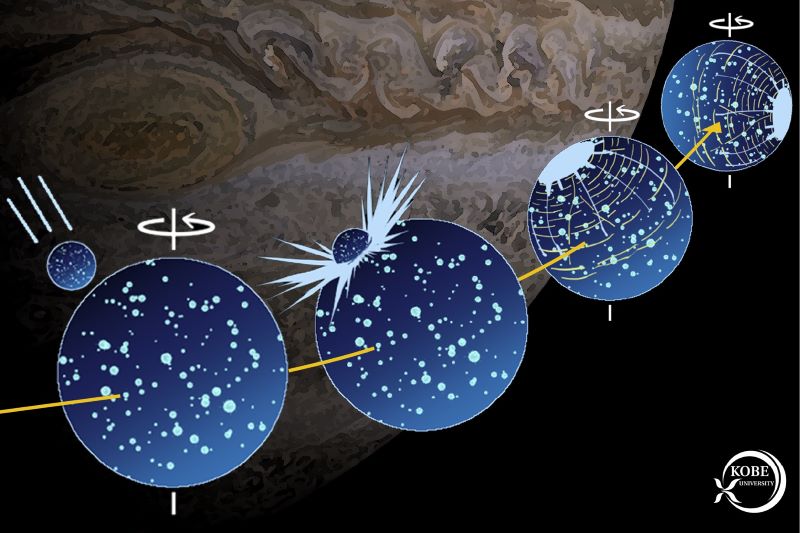
Jupiter’s moon slammed and tipped by ancient asteroid
Some 4 billion years ago, a behemoth asteroid – perhaps 20 times larger than Earth’s dinosaur-killer – slammed into Jupiter’s moon Ganymede. The incredible impact would have sent ejecta flying outward, creating concentric circles of debris around the impact site. On September 3, 2024, Kobe University said the impact caused Ganymede to shift on its axis as a result.
The scientists published their results in the peer-reviewed journal Scientific Reports on September 3, 2024.
Furrows on Ganymede
In images of Ganymede, you can see long lines called furrows covering much of one side of the moon (see image below). These ancient markings are partly covered by craters from more recent impact events. Previously, scientists in the ’80s determined that these furrows were the concentric rings of ejecta pointing back to the site of a major impact. Hirata Naoyuki, the lead author of the new study, said:
The Jupiter moons Io, Europa, Ganymede and Callisto all have interesting individual characteristics. But the one that caught my attention was these furrows on Ganymede. We know that this feature was created by an asteroid impact about 4 billion years ago. But we were unsure how big this impact was and what effect it had on the moon.

Jupiter’s moon Ganymede and the new discovery
Ganymede is our solar system’s largest moon. In fact, it’s even larger than the planet Mercury. And beneath Ganymede’s icy surface lies an ocean of liquid water. Also, if we lived on Jupiter, we would only ever see one side of Ganymede, just like we do with Earth’s moon. That’s because both satellites are tidally locked to their planets.
While examining the furrows on Ganymede, Hirata noticed the impact site is on the opposite side of the moon from Jupiter. This reminded him of a discovery that New Horizons made at Pluto. On Pluto, a huge basin named Sputnik Planitia is likely the result of a giant impact that tilted Pluto’s axis. The press release said:
Drawing from similarities with an impact event on Pluto that caused the dwarf planet’s rotational axis to shift and that we learned about through the New Horizons space probe, this implied that Ganymede, too, had undergone such a reorientation.
Hirata’s many simulations of impact events on moons and asteroids helped him calculate an impact that would have put this reorientation into motion.
The giant impact
Hirata calculated the asteroid would have had to be around 195 miles (300 km) in diameter. And it would have created an initial crater between 875 to 1,000 miles (1,400 to 1,600 km) in diameter. (That’s before the ejecta settles back in.) This is the size of impact that would be necessary to change the mass distribution to shift the moon’s rotational axis to where it is now. Hirata said:
I want to understand the origin and evolution of Ganymede and other Jupiter moons. The giant impact must have had a significant impact on the early evolution of Ganymede, but the thermal and structural effects of the impact on the interior of Ganymede have not yet been investigated at all. I believe that further research applying the internal evolution of ice moons could be carried out next.

JUICE on route to Jupiter
ESA’s JUICE space mission is currently speeding toward Jupiter and its moons. A decade from now, we may know more about Ganymede and better understand what happened during its giant impact some 4 billion years ago.
Bottom line: About 4 billion years ago, a huge asteroid – 20 times larger than Earth’s dinosaur-killer – struck Ganymede and tilted the moon’s orientation.
Source: Giant impact on early Ganymede and its subsequent reorientation











